It's show time! [ Stage Report ]
These pictures used below are from all seven shows
[ Click this picture to enlarge it. Click the following pictures for a slideshow ]
1@All of Me
Right after the opening the song All of Me begins.
The song with a funk-groove and rap that disrupts the quietness and ends with 4 taiko drummers fervent beat stirring audience with excitement.
After the first song, there was already a standing ovation.
This was the moment where the band members realized they had been accepted.

  
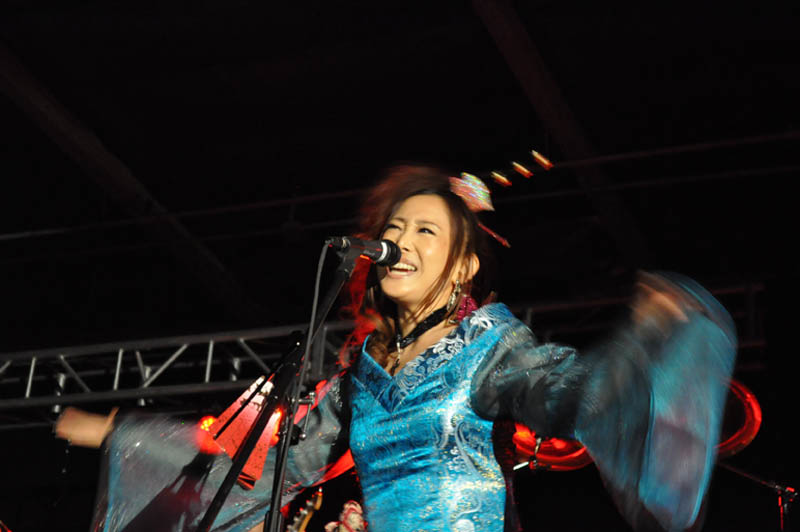 
 
 |
Suddenly Ninjas joined the band members and the Japanese dance to another standing ovation.
The Ninjas unexpectedly became popular feature on this tour. |
 |
With great quickness and stealth the "Ninja" set up the microphones and musical instruments. |
After each show the Ninjas were passionately asked for autographs by the kids.
|
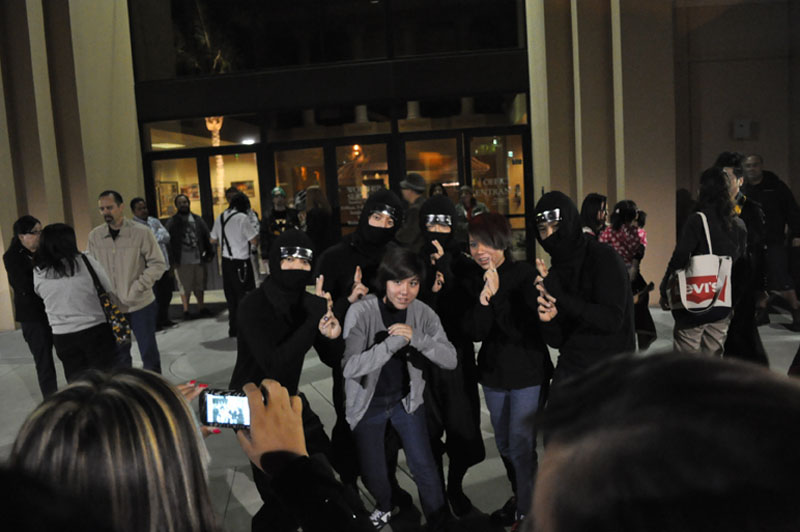  |
#3@Hallelujah
After the first couple of songs, Marre lead and involved the audience in the show. He encouraged the audience to participate with the band with a single word, "hallelujah". The hearts of those present became one as the song rose as an offering of praise to heaven.
  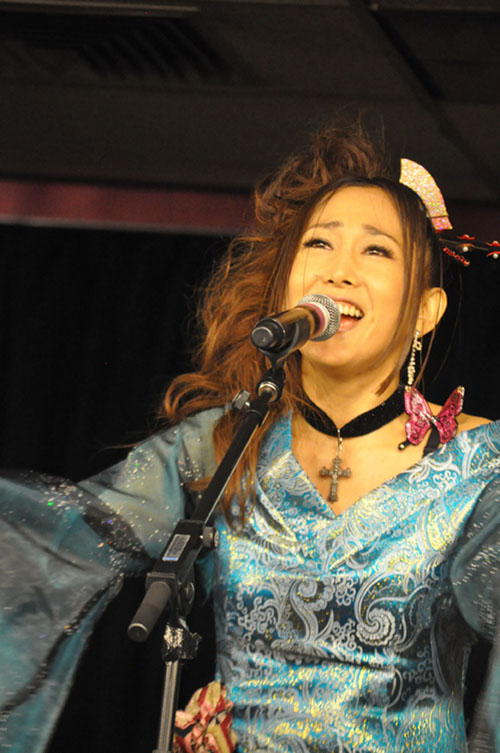
  
#4@Lord, I Lift Your Name on High
This song started with a shaminsen solo which seemed to come from nowhere.
Many in the audience didn't know the name of the instrument but were drawn to the awesome sound and performance. The crowd was filled with unexpected awe.
 
   
The solo performance of the shaminsen ended, and the reggae infused intro to the song, "Lord I lift your name on high" began.
The reaction of the audience was visible as many recognized the song, and those who knew the lyrics joined in. |
 |
  |
With taiko-drums solo in the middle of the song, the audience was completely drawn in by this breath-taking performance.
   |

 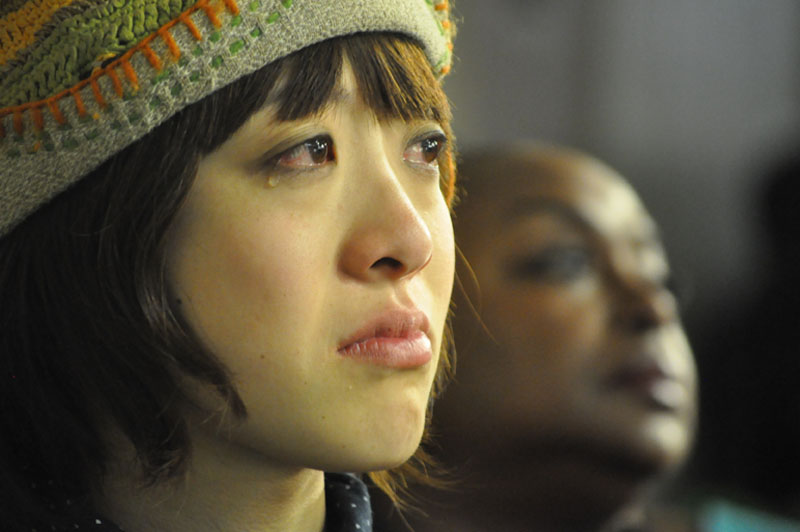
|
#5@Preaching
The first half of the concert ended and Marre began to talk.
First and foremost, Marre's talk began with him expressing his appreciation of the support and prayers offered by Americans to those suffering from the tsunami and the earthquake that occurred last March which was met with a round of applause.
Then Marre began to talk about Kana, a worker at Kick Back Café who is from one of the hardest hit tsunami areas, Rikuzen-Takata. As Marre told her story, the audience was visibly touched with some even shedding tears.
Hence, Marre was able to accomplish his biggest mission for this tour.
Back in October, at a concert at Kurosaki shrine in Rikuzen-Takata, he promised the audience that he would be sharing about the Yamatodamashi, or the Japanese soul, that he saw in the people who were suffering in the disaster area.
While it would have been easy and even natural to blame God for their misfortune in suffering from such a mammoth catastrophe, they instead were able to be appreciative of the fact that they were alive and felt a sense of duty to move forward and live life to its fullest potential. He had promised those present at Kurosaki shrine that he would be sharing their virtuous attitude with Americans, one that would be valued across the globe, defining the word "yamatodamashi". |
| (picture on the right: Kana from Mobile KBC) |
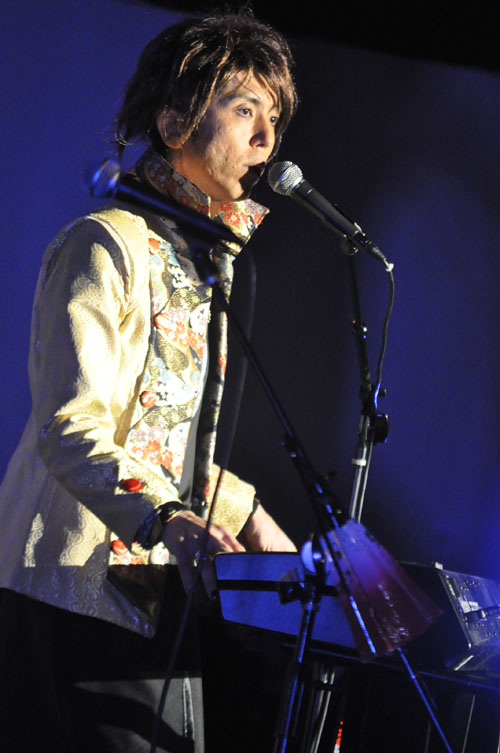
|
At all 7 venues, he was able to keep his promise.
He also went on to contrast this with how some Americans who in a "Christian country" shot each other for water when a natural disaster like the one that hit Japan occurred.
The Japanese may not know Christ, but they are virtuous.
If the Japanese are able to thank God in such circumstances without Christ, how much more should Americans, who have God, be able to thank God!
Marre delivered his rebuke-like message at each venue.
How would the people accept such a direct and critical message? The staff that understood English were apprehensive about the response.
But the preaching was welcomed with a round of applause.
|
 |
After the show, some came to Marre and told him that there may be very harsh opposition to the message that was spoken, but this is the type of message that Americans needed to hear.
There were also those that appreciated the courage that Marre had in speaking such a bold message to and asked him to continue to do so. |
U@Silk Road
This song was the most popular of the concert.
It is a song that reflects the journey of the Hata tribe, the ancient tribe that originated in the Middle East and traveled to the Far East through the silk road. The song resonated with those that were suffering economically under the severe conditions of the US economy, as the lyrics talked about how to overcome difficulties and obtaining freedom. People stood up, raised their hands, wept, and poured their hearts out.
Because this song was so popular, Heavenese went to a studio to record it for a CD because it was in such high demand.

  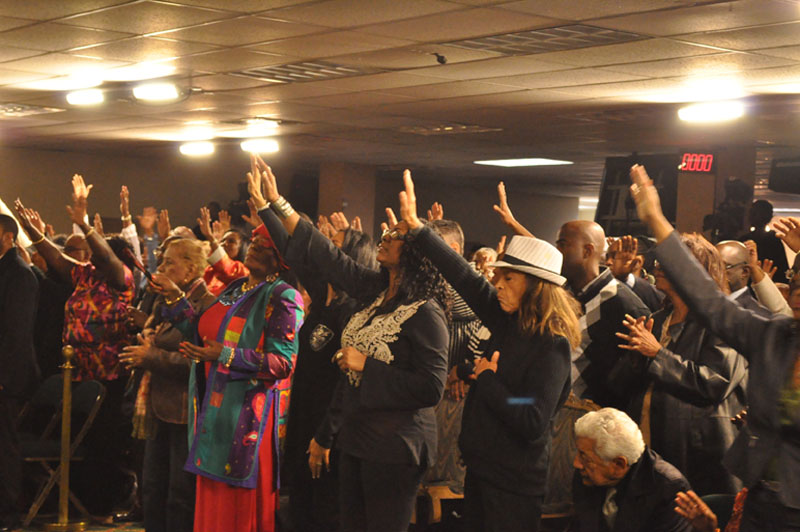
V@Chanchiki
With a solemn atmosphere created by a heavy message, the mood quickly changed with the next song.
 |

Sheila E's parents came to see the show.
(Sheila's father, Pete Escovedo is a well known and respected Latin percussionist) |
If you know Heavenese, you know that they are not always serious, but often comedic, as they believe, "laughter is the biggest cure for disease". This part of the performance is called "chanchiki" by the band.
With a strong urging by both Shiela E. and Kaori Nara Turner, this "comedy routine" was incorporated into the mix.
As expected, the venue was filled with laughter.
   
#W@3n1
After the laughter subsided, the audience caught their breath as they listened to a rousing taiko drum performance where the entire band played heightening the audiences' expectations.
The amazing power that these drums have resonates with the Japanese soul, and as was expected, was well received by the audience.
|
  |

  |
In the middle of the drum session, Hallelujah was shouted and the crowd responded enthusiastically.
This is one of the areas where many Japanese differ from Americans in the way they respond in this type of concert setting.
After the performance the audience showed their acceptance and appreciation for the music by giving the band a standing ovation. |
   |
X@Kanjincho
As the ovation continued, "Kanjincho" music was played, and the percussionist Satomi started to tap dance to music usually used for traditional Japanese skits called Kabuki.
The theme of the tap dance was faithfulness to a master. This tap dance is completely outside of the norm of the tap dance industry.
   
PO@LIFT
And finally the ending, Lift.
After the chanchiki, where the audience was able to relax, the continuous excitement that the crowd experienced was well expressed when Heavense was told, "there was just no room for boredom."
 
  
This was the song that was used in the promotional video, and at Bible Enrichment Fellowship International Church in Inglewood, the audience danced with the band using Japanese fans.
  
 
EC@ Tell Everybody
At each venue there was an encore, and the band took the stage again for one last song.
The excitement that the audience brought to the band when they chanted "Heavenese" was simply unforgettable.

 
 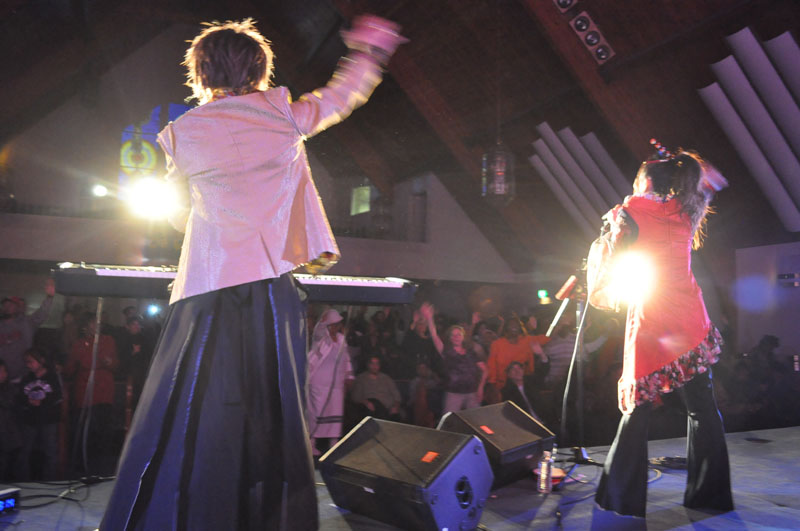
 |
At Calvary Chapel Montebello and Bible Enrichment Fellowship International Church, Shiela E. came to show her support and performed with the group during this song. |
   |
To our supporters in Japan, those from Japan who traveled with us, and everyone who supported us in L.A., a heartfelt thank you.

|

